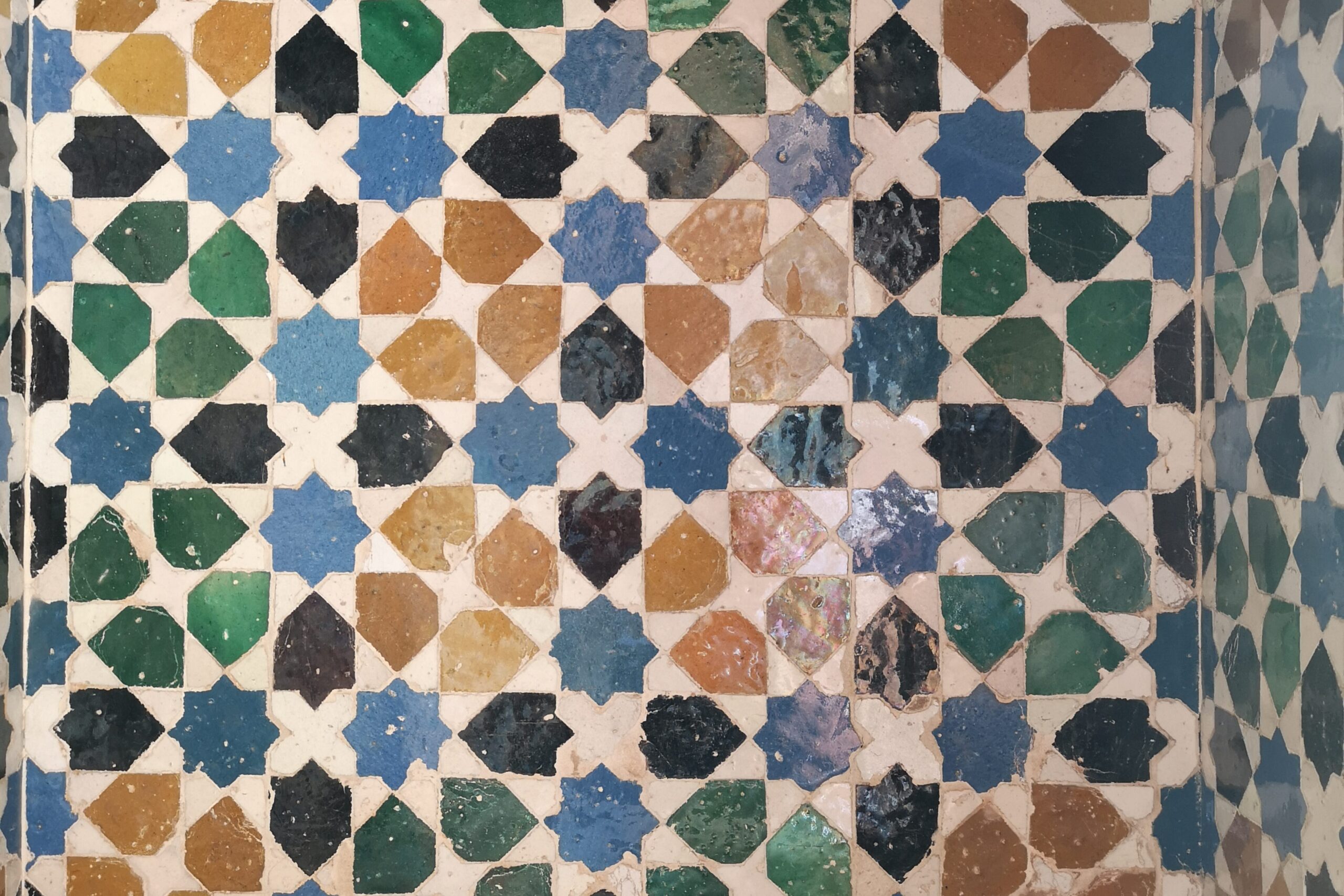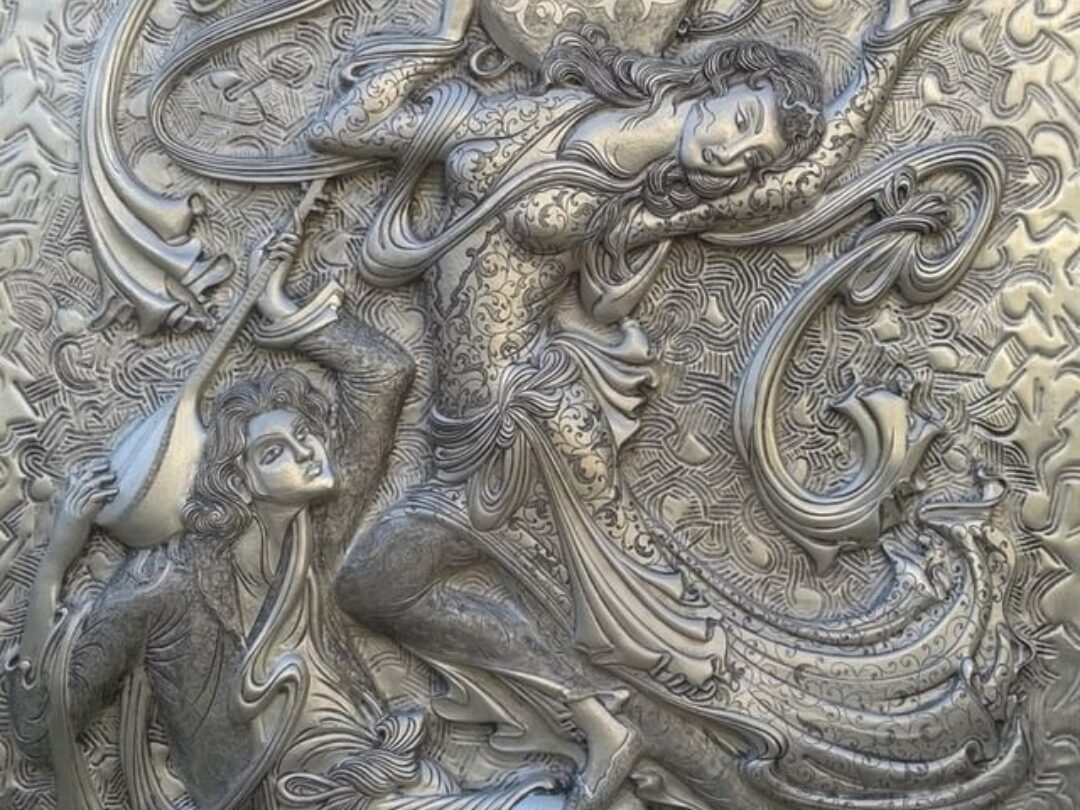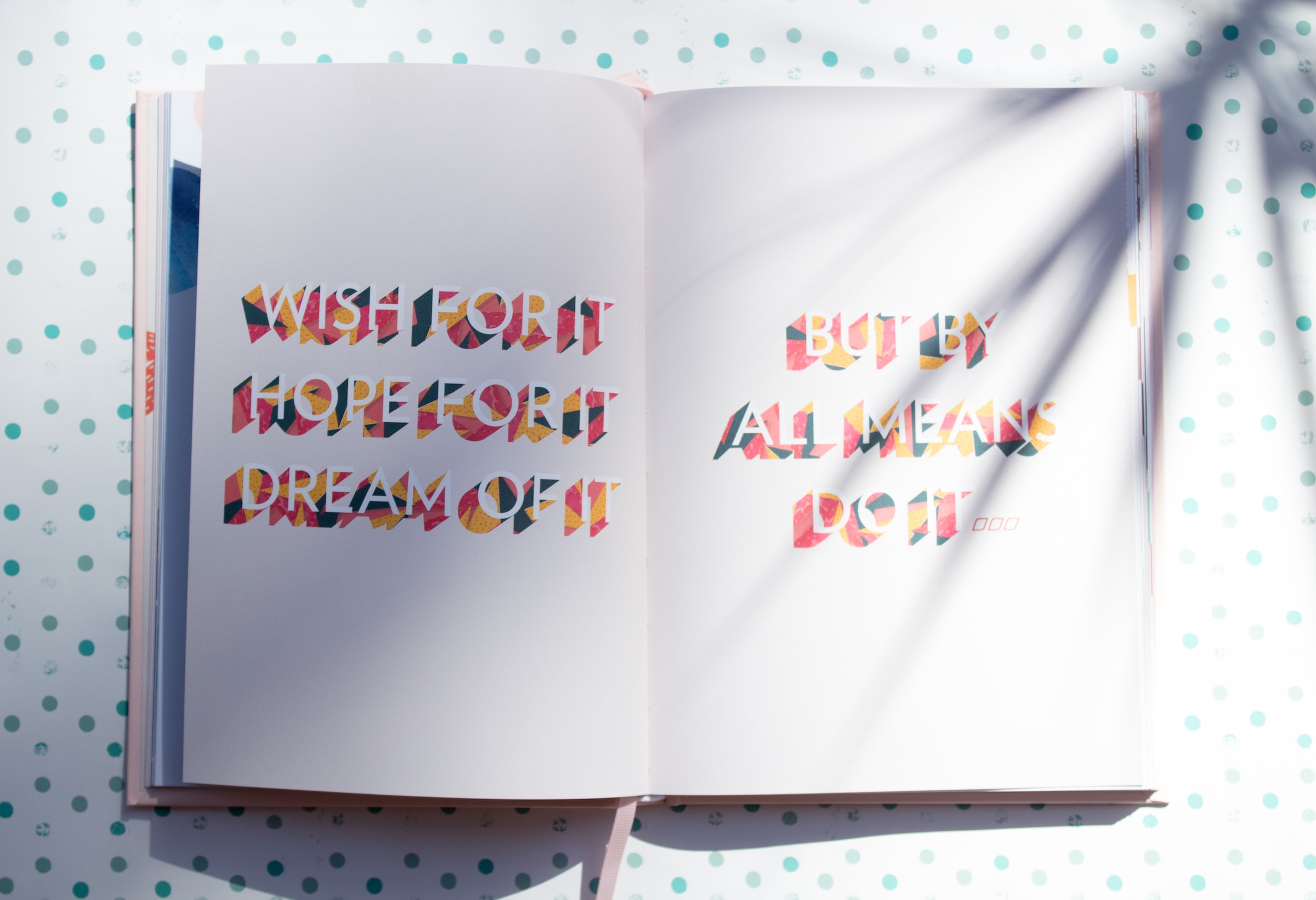

As a contemporary Islamic artist I love creating contrast between the traditional patterns and the modernity of colours. Sincerely I rarely use traditional colours in my artworks simply because I believe that Islamic geometry and Islamic art in general has evolved over time and continues to grow as an art form.
But it is fundamental to know how those patterns were created in the past and why craftsmen used certain colours.
Islamic art is known for its distinct and vibrant traditional colours, which are often based on a range of shades that represent different aspects of the Islamic faith.
The use of colours in Islamic art goes beyond merely aesthetic purposes, as they are often employed to convey spiritual messages or represent moral lessons.
As you may already know, Islamic art is based on symbolism and avoids figurative art. This stems from the belief that the creation of living forms is unique to God. The imitation of God by Muslim artists is considered as making themselves equal to God, which is a great sin in Islam.
This is why colour is so important. What cannot be depicted with the use of figures, will be depicted with geometry, Islimi, calligraphy and colours. The white, green, yellow, black, red and blue colours are mentioned in different surahs.
Five of the colours that are mentioned by name are terms of the pre-Islamic vocabulary of Arabic, abyad (white), ‘aswad (black), ‘ahmar (red), ‘aṣfar (yellow) and ‘akhḍar (green).
Nowadays, Islamic artists use a variety of colours that allow them to expand this art form and make it contemporary. But in the past, the colours reflected in Islamic art could vary according to historical period, availability of pigments and geographical position.
The pigments were obtained from:
- minerals
- plants
- animals, insects and fish
Let’s see now which are these traditional colours, where did the pigment come from and what Islamic symbolism infused in them.
*** RELATED CONTENT ***
Colour Theory: the Ultimate Guide
Different Types of Paint for Art
How to Fix Watercolor Mistakes
BLACK – ASWAD
Black was one of the first colours used in art, and it’s also widely available since it’s derived from charcoal.
In Islami, it’s recognized as the colour of the cloth enveloping the Kaaba. This colour emphasizes the idea of the divine origin of the black colour, covering all the colours. Many Islamic theories put forward the idea of God’s colourlessness, which has been considered a symbol of God’s existence.
BLUE – AL-AZRAQ
The earliest forms of blue pigment were extracted from the limestone rock mixture ‘lapis lazuli’. Originating from the Middle East, in particular Afghanistan, the word’s etymology comes from the Latin ‘lapis’, which translates into ‘stone’, and ‘lazuli’, meaning ‘blue’. Lapis lazuli is a highly prized and expensive pigment.
Apart from Lapis Lazuli, different shades of blue are also used in Islamic art, such as turquoise and cobalt.
Blue is considered symbolic of the earth and sky, and in Islamic tradition often signifies the impenetrable depths of the universe.
GREEN – AKHDAR
Green has been used in art since the time of the Ancient Egyptians, primarily using green earth and malachite in their art.
It is in the middle of the visible spectrum and symbolizes life, harmony and nature thus it’s often used in Arab flags.
In Islam, we can say that it’s the primary colour and symbol since in the Quran it is associated with paradise.
WHITE – ABYAD
White was one of the first colours used in art together with black, and it’s naturally occurring as calcium carbonate (a.k.a. chalk).
It is perhaps the second-most associated colour with Islam and signifies cleanliness, purity and modesty.
RED – AHMAR
Red ochre and cinnabar were the main pigments used for the red colour.
In Islam, as in many other cultures, red has different meanings: it’s the colour of love, and at the same time, it is the colour of fire, war and blood.
Psychologically, it is a naturally attention-grabbing colour because it has the longest wavelength, which means that is perceived closer in the visible spectrum.
YELLOW – ASFAR
The most and first used pigment for yellow was ochre.
It has a long wavelength and can grab attention easily. Yellow is often associated with gold, although while gold represents the enlightenment that comes from the word of God and is widely used in the Quran and manuscripts, the yellow colour in Islam inspires gladness.
It is fascinating to learn about the origin of these vibrant colours. As we have seen, Islamic art has evolved over time and continues to grow as an art form.
I invite you to explore more about Islamic art and its use of colours. By understanding this unique form of art and its distinct colour palette, you can gain a deeper appreciation for this beautiful art form.
If you want to learn more about this topic I recommend reading this blog post.
Traditional colours of Islamic art
May 16, 2023



Well, there was 5 minutes well spent thinking about the significance of colour, highly enlightening and food for thought!